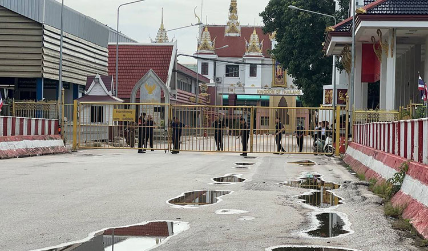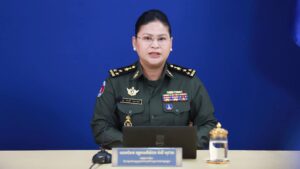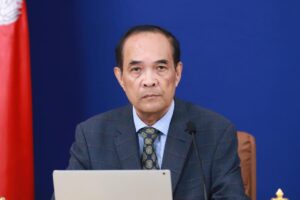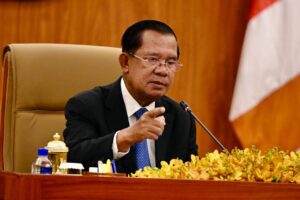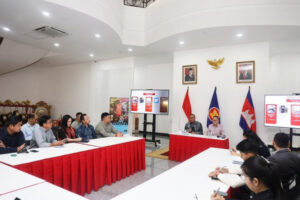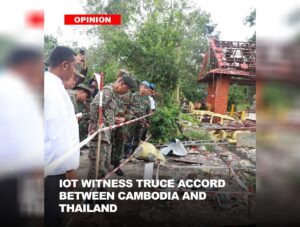Thailand Must Take the First Step: Border Closure Was Their Move, Not Cambodia’s
Khmer Times | Since early June 2025, the border tensions between Cambodia and Thailand have escalated, not through confrontation or provocation from Cambodia, but through a series of unilateral actions taken by Thailand. From the restriction of entry at key checkpoints to the full closure of crossings along the shared border, Thailand has taken the lead—not in diplomacy, but in closure, control, and silence. Let’s be absolutely clear: Cambodia did not start this.
The chronological record shows that it was on 6 June 2025 when Thailand, through its National Security Council and Army Region 2, began restricting movements across the border. What followed was a series of unannounced, uncoordinated decisions: abrupt closures, selective bans, and reduced opening hours, beginning at major checkpoints like Poipet. The Thai military was authorized to manage border operations without any bilateral consultation.
On 7 June, Army Order No. 806/2568 was issued, giving military officials sweeping powers to control border crossings at their discretion. Poipet was closed without warning, affecting ordinary travelers, traders, and humanitarian crossings.
By 24 June, the Thai army had ordered the full closure of all major checkpoints with Cambodia across six provinces—Sa Kaeo, Surin, Buri Ram, Sisaket, Chanthaburi, and Trat—allowing only narrow exceptions for students, medical emergencies, and essential trade. This was not diplomacy. This was a unilateral military measure.
Cambodia Chose Patience Over Provocation
In stark contrast, Cambodia has remained calm, measured, and civil. Prime Minister Samdech Moha Borvor Thipadei Hun Manet made it clear: Cambodia will not escalate the situation. Cambodia will follow Thailand’s lead—open or closed. “We are not the ones who closed the border. If Thailand reopens it, Cambodia will respond accordingly. We want peace, normalcy, and good neighborliness.”
This shows the Cambodian government’s commitment to peaceful coexistence, regional stability, and mutual respect, even when provoked by unjustified restrictions.
The Ball Is in Thailand’s Court
Thailand cannot pretend the situation is mutual or symmetrical. The ball is clearly in Thailand’s court. The closure began with Thailand; therefore, reopening must also begin with Thailand.
Because the Thai government cannot control its army or effectively lead the country, it has tried to deflect blame by claiming that Thailand has no policy of closing the border. However, this is merely lip service—on the ground, the Thai army has unilaterally closed the border and is preventing any crossings.
Even Thai Prime Minister Paetongtarn Shinawatra acknowledged her active role in this issue. The Prime Minister ordered publicly the Commander of Army Region 2 to summarize the opening and closing times of the Thai-Cambodian border crossing. This direct order affirms that border control is being driven from the top of the Thai government, not by necessity, not by bilateral agreement, and certainly not by Cambodia.
Cambodia has shown maturity, restraint, and responsibility. But peace is a two-way street. While Cambodia remains committed to stability and international law, Thailand must decide whether it wishes to continue down the road of military micromanagement and nationalist posturing, or to return to the civilized path of diplomacy. As Prime Minister Hun Manet stated: “We will follow Thailand’s position.”
So, to our Thai counterparts: Will you choose confrontation or cooperation? Will you keep the gate closed, or take the first step toward re-opening the borders? The ball is in Thailand’s court but the question is who has the real power to reopen the borders to save face.
Roth Santepheap is a geopolitical analyst based in Phnom Penh. The views expressed are his own.

